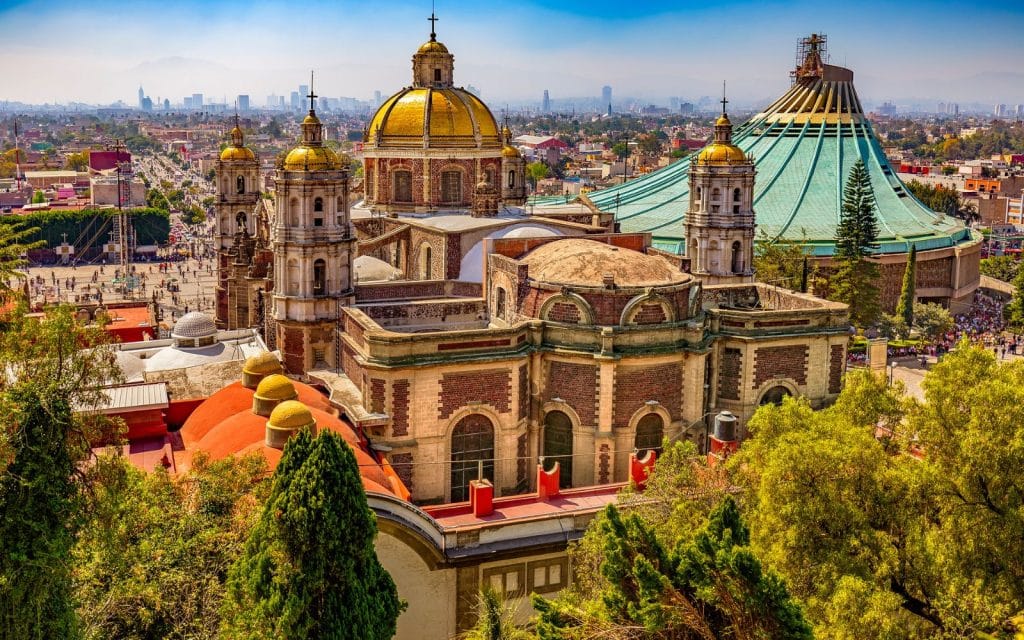Mexico City is a safe destination to visit now. It is a beautiful city with a rich culture, delicious food and many historical sights.
However, Mexico City is the largest city in North America. More than 9 million people live in the 577 square kilometer city. Travelers can expect safety challenges common to all major cities and should take precautions.
Suggested: Is Cancun safe? Travel advice 2024
The U.S. Department of State advises U.S. citizens traveling to Mexico City to exercise extreme caution due to crime.
The most common crimes in Mexico City are carjacking, robberies, kidnappings and murders. Crime is more common in some parts of the city than others. For example, Centro Historico and Roma are relatively safe. Crime in Mexico City is also lower than many other parts of Mexico and some U.S. cities.
Tourists can take precautions to avoid becoming victims of crime.
- Avoid walking alone at night. Women should always avoid walking alone.
- Avoid showing their money.
- Try to look less like a tourist. For example, avoid wearing shorts and flip-flops and displaying an expensive camera.
- Learn some Spanish phrases.
- Avoid wearing flashy jewelry.
- Research neighborhoods and avoid high-crime neighborhoods such as Tepito and Iztapalapa.
- Take only authorized or reputable taxis.
- Stay aware of your surroundings.
LATEST UPDATES / NEWS from MEXICO CITY:
January 13 – Security issues must be resolved before Mexico’s economy can grow
To capitalize on the current trend of nearshoring investments, Mexican authorities at local, provincial and federal levels must to collaborate with chambers of commerce in the industrial sector to efficiently address the country’s persistent and worrying security problems.
Mexico ranks 116th overall in the World Justice Project’s 2023 Rule of Law Index, making it one of the worst-performing countries in the world, partly due to the persistent risk of truck hijackings on Mexico’s major highways.
Despite the generally high level of violence, increasing investment in Mexico’s northern states could signal an opportunity to boost the underdeveloped economy in the rest of the country.
Safe neighborhoods recommended for tourists
Polanco
This chic neighborhood is known for its luxury shopping, dining and entertainment. It is considered one of the safest areas in Mexico City for tourists.
Reform
Located in the heart of Mexico City, Reforma is home to many of the city’s top tourist attractions, including the Angel of Independence Monument and Chapultepec Park. The area is also well patrolled by the police, making it a safe choice for tourists.
Condesa
This trendy neighborhood is popular with young professionals and tourists alike. It is known for its art deco architecture, vibrant nightlife and numerous parks and green spaces.
Roma
Roma is another trendy neighborhood popular with tourists and locals alike. It is known for its street art, vintage shops and hip restaurants and bars.
Coyoacan
This charming neighborhood is known for its colonial-style architecture, art galleries and bohemian atmosphere. It is considered one of the safest areas in Mexico City for tourists.
Common scams in Mexico
Like many places, Mexico City has some common scams that tourists should be aware of.
Taxi scams
Some typical taxi fraud schemes in Mexico City involve overcharging visitors or holding them hostage until they withdraw money from an ATM. Travelers can avoid taxi fraud by choosing only reputable taxis such as Authorized (at transport hubs), Sitio (at official taxi ranks) and Radio (which respond to a traveler’s call).
Fake ATMs
Some ATMs are fake and steal money when tourists use their cards. Tourists can avoid these scams by only withdrawing money from banks or airport ATMs and specifically avoiding unmarked ATMs.
Scammers
Sometimes individuals approach tourists and start a conversation in the hope of getting money. Tourists can avoid this scam by simply walking away.
Natural disasters
The most important natural disaster that can affect the safety of travelers is an earthquake. Mexico City lies along the ‘Ring of Fire’, a horseshoe that curves around the Pacific Ocean. Small tremors are common, but the most recent major earthquake was in 2017.
Tourists can stay safe if they know what to do in the event of an earthquake. As soon as they hear a warning, they should do it drop, cover and hold. If indoors, tourists should go to the lower levels and avoid windows. When outside, they should find an area away from electrical lines, trees or balconies.
The city also experiences hurricanes, floods and landslides, but these are less common.
Top things tourists should avoid
To stay safe, tourists should avoid certain actions. These are:
- Showing their valuables.
- Drinking or getting drunk on the street.
- Using the metro during rush hour.
- Regularly visit restaurants closest to the tourist attractions. (They tend to overpay.)
- Sharing personal information with strangers.
- Walking alone through the city in the evening.
- Fight back when robbed.
Why visit Mexico City?
Tourists will find several good reasons to travel to Mexico City.
History
Mexico City stands on the ruins of an Aztec capital and provides an excellent opportunity to learn more about this ancient civilization. It is also the oldest inhabited city in the Americas and was the capital of New Spain for 300 years.
It also features three UNESCO Heritage Sites: the Floating Gardens of Xochimilco, Casa Luis Barragán and the Central University City Campus. The Camino Real de Tierra Adentro also includes Mexico City.
Art
Muralistic art is common in Mexico City. Artists Frida Kahlo and Diego Rivera also lived in Mexico City, and tourists can see a glimpse of their lives there.
Food and fun
Mexico City is an excellent place for foodies. Tourists can also find food excursions and cooking classes. Mexico City also has a rich nightlife. There are indeed two of the best bars in the world.
Hiking opportunities
Mexico City offers two volcanoes that hikers can climb. It also features the Chapultepec Forest, another excellent place for hiking.
Update archive:
March 27 – Teenager arrested after killing 8 people at a birthday party
According to the federal Public Security Department, a 14-year-old boy named “El Chapito” (Little Chapo) locked up for the drug-related murders of eight people near Mexico City.
The teenager allegedly stopped on a motorcycle and lit a fire on a family in Chimalhuacan, a low-income suburb of Mexico City. Seven other gang members were arrested for drug possession.
At the time of the incident, the victims were hosting a party at their home, which also injured five adults and two children. According to reports, it was a birthday celebration.
February 27 – “Mexico City Police Fight Crime in Virtual Reality at Futuristic New Training Center”
The police in Mexico are currently busy receive training to fight virtual criminals in virtual reality.
The first VR training facility for police officers in Latin America has opened in Mexico City, where they can sharpen their reflexes and perform maneuvers.
The center was inaugurated on February 15; According to local authorities, crime there has been declining for three years.
Police personnel demonstrated a simulated intervention among citizens in the three-dimensional reality of the VR headset.
They “can interact with real or virtual avatars, in extremely realistic graphics,” Harfuch said VR allows the recreation of various intervention sites and explained how this works: “schools, shopping centers, restaurants, highways, airplanes.”
“Only three police forces in the United States and the Israeli police have this virtual reality system,” the local government said in a statement.





